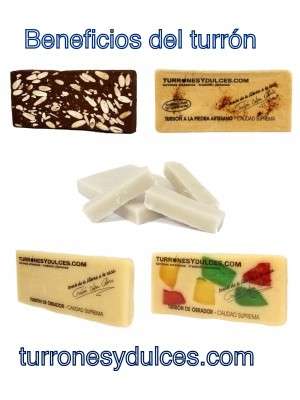
Although it is not consumed throughout the year, the Spanish turron is one of the typical sweets that we consume more in Spain, especially for Christmas where there are many excesses in terms of food. It is always recommended to take it in moderation because it has many positive properties at a nutritional and energetic level.
Nowadays we are much more aware of what we eat and the nutrition. In short, we take more care of ourselves: we try not to abuse, we do sport, we read food labels to see what they are made of, we are more interested in the ecological world and there is even a great trend towards new ways of eating, such as the vegan world, which tries to avoid any animal origin ingredients in our diet.
So, knowing that the typical turrones are Christmas sweets and that they offers us a great energy contribution, can we talk about healthy turrón? We tell you about it taking into account different studies from Spanish universities, valuing its ingredients and what is understood by the concept of turron.
What do we call turrón and what are its ingredients?
When we talk about turrón we have to take into account many facts because nowadays, as we usually say in Jijona after centuries producing this product:
They call turrón to anything
It's not everything turrón. From our point of view, there are many substitutes that cannot be considered as turrón, especially when newer flavours are included that have nothing to do with the classic. Normally, handmade turrón do not contain any preservatives. Or to put it another way: the more industrial turrones usually use other elements to preserve the flavour. For example, instead of using honeys they use inverted sugars or flavour enhancers. That is why in this article we are referring to the classics, the usual hard and soft turron.
We do not go into whether they are good or not on the palate, nor whether they are more or less healthier. We simply consider that they should be treated as something else, another sweet or dessert, because in the end the consumer is quite confused.
For us, and for this article in which we talk about the properties and benefits of Spanish turrón, when we mention turrón we are referring to the typical and classic ones:
- Soft turrón, also called Jijona turrón if it has the Denominación de Origen. It has an earthy, brown color, because of the toasted almond.
- Hard turrón or Alicante turrón, with the Denominación de Origen. It is the one in which you can see the whole almond, with wafer, white.
These two types contain only the following ingredients:
- roasted almond (Marcona variety if possible),
- pure bee honey (usually rosemary or orange blossom)
- egg white (albumin) and
- sugar.
The hard nougat also has the typical wafer.
So to talk about its benefits, we can find some clues in treating these separately. Of all of them, sugar is perhaps the most controversial in terms of nutritional aspects, and that is why sometimes we treat this Christmas sweets as unfit for our health.
In the past, turrón did not contain sugar but honey, but over the years it was introduced into the industry as it was more available, cheaper and easier to handle than for example, honey.
Nowadays, the Regulatory Council of Denominación de Origen Jijona and Alicante sets the minimum percentages of each raw material so that it has the optimum quality to protect the product from the consumer. It also establishes the following minimum percentages of almonds in the finished product: 64% in the case of Jijona turrón and 60% in the case of Alicante turron, which together with a minimum of 12% of honey means that the nougat protected by the Regulatory Council always belongs to the highest quality, the highest according to the Technical-Sanitary Regulations for turrón and Marzipan.
It is true that we also consider turrón to the varieties of roasted and unroasted egg yolk, coconut, snow (very similar to marzipan), fruits, chocolate, nougat and little more. Perhaps we are a bit purist about this, but strange flavours like strawberry, banana, gin-tonics, etc. we don't like to see it as such.
What are the health benefits of turrón?
As we have said, the basic ingredients of soft or hard turron are almond, honey, egg white or albumen and sugar. So as a whole, because of the way it is made, without additives or preservatives, it has the advantages (and disadvantages) of each of them separately.
As we will see in the following points, the almond has many positive properties. For example, it -y-propiedades-del-turron/">prevents osteoporosis and improves the joints thanks to its antioxidant power.
Turrón also has a lot of protein thanks to the almond and, of course, the egg white. All this, mixed with the hydrates of sugars and honey makes it also a food with a high caloric content. This made the armies use them centuries ago, among other things, because it was very well preserved.
We also get it to provide us with essential fatty acids similar to those provided by olive oil. 75% of the fatty acids it provides us with are unsaturated.
Properties of the almond
The almond is a typical nut of our Mediterranean area, although unfortunately it does not stand out too much in our diets. The variety used in the turrón is usually the marcona (which is the most desired), the comuna, the mollar, mallorquina and planeta.
They are very rich in protein (18%) so they are a high nutritional value, also stands out for its high fiber content (10%) and its great contribution of minerals (Magnesium, Iron, Calcium, Phosphorus and Potassium).
Almonds contain carbohydrates, vitamins B1, B2, PP, C, A D and E. Almonds become a source of vegetable protein, essential for the children’s consumption. In addition, their antioxidant power helps protect the condition of our joints in adulthood.
Its calcium content helps to strengthen bones and prevent osteoporosis. In addition, the almond becomes a medicinal ally thanks to its antiseptic properties.
However, despite its enormous advantages we should not forget that it is a food that we should consume in moderation, due to its high caloric content.
It is an ingredient that by itself is highly recommended for diabetics since it contains a low content of sugars.
Turrón provides 7 of the 9 essential amino acids needed by our body. Besides a high vitamin value as well as essential fatty acids (most of them are unsaturated).
Almonds and cholesterol
Returning to almonds, recent studies, such as those by the University Pablo Olavide of Seville and the University Miguel Hernández of Elche, have shown that the consumption of these nuts can help us to reduce "bad" cholesterol in the blood. As do other nuts and dried fruit, such as hazelnuts, pine nuts or walnuts, which are very typical of varieties such as cream-nut turron, empiñonadas, etc.
They are also a great source of antioxidants, making them a healthy option.
More conclusions from the UPO and UMH study on Turrón
- Turrón de Jijona has a very balanced nutritional composition due to the products it contains. Especially the almond, whose lipid profile is similar to olive oil, that is, it fits the profile of the typically Mediterranean "balanced diet".
- It is also one of the 10 richest foods in folic acid, vitamin E, linoleic acid and has 7 of the 9 essential amino acids thanks to the egg.
We cite more conclusions from the study:
For this study, a group of healthy people consumed thirty grams of turrón de Jijona per day for five consecutive weeks. Before and after this period of consumption they underwent a blood test to determine the levels of total cholesterol, HDL (good cholesterol), LDL (bad cholesterol) and triglycerides. In addition, throughout the period, the study participants filled out questionnaires in which they wrote down everything they ate that was useful in assessing interference with other components of their usual diet. The results obtained showed that 67% of the participants, once they had finished consuming 30g/day of turron de Jijona for five consecutive weeks, had a decrease in their total cholesterol level; 20% had an increase and 13% had no change. HDL (good cholesterol) levels remained stable in almost all participants. As for LDL (bad cholesterol), 74% of the participants showed lower levels; 20% slightly increased levels and 6% showed no change. Finally, triglycerides decreased in 67% of the individuals, increased in 26.6% and remained unchanged in 7%. A first conclusion of the study is that regular consumption of turrón de Jijona implies a decrease in total cholesterol. However, the relationship between HDL and LDL cholesterol is much more interesting. The HDL cholesterol adheres to other cholesterol molecules in the blood and transports them to the liver to be excreted from the body. High levels of HDL cholesterol are associated with a lower risk of heart attacks, while low levels of HDL cholesterol raise the risk of heart attacks. A high level of LDL cholesterol in the blood increases the likelihood of fat accumulation in the arteries, thus obstructing blood flow and consequently increasing the risk of cardiovascular problems such as heart attacks and brain damage. This is why HDL is colloquially called "good cholesterol" and LDL "bad cholesterol". By lowering the levels of LDL while those of HDL remain stable, "the relationship between the two becomes more favorable, thus decreasing the chances of suffering cardiovascular problems.
History and Origins of turrón
As we all know, turrón is the Spanish sweet par excellence and also the best known internationally. Its origins go back to the Arab people, who used to eat it during religious celebrations. Little by little it became a Christian tradition, especially at Christmas. Nowadays 74% of the Christmas sweets consumed are turrones of different flavours. If you want to know more about the origin of turrón you can click here (https://www.turronesydulces.com/historiaturron.htm)
Benefits and properties of pure chocolate turrón
Finally, let's talk about those chocolate turrones, specifically those made of dark chocolate turrón. We could refer to them as a very healthy food thanks to the great amount of antioxidants, such as those found in wine or green tea. This makes it, according to many studies, an ally to be taken into account in the prevention of cardiovascular risks.
So you know, the next time you go to eat nougat Remember the benefits it will bring you, thanks to being such a natural product, both for the ingredients used and for the preservative-free production process.















 Turron from Spain
Turron from Spain












 Marzipan
Marzipan







 Polvorones
Polvorones 





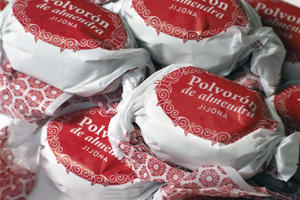
 Chocolates
Chocolates







 Sugar Almonds
Sugar Almonds

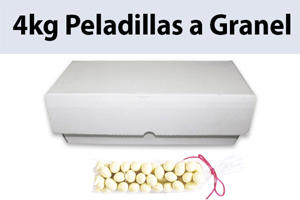
 Gifts - Bundles
Gifts - Bundles


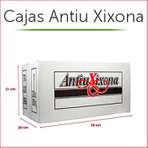
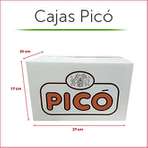
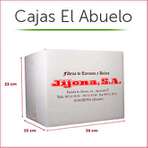
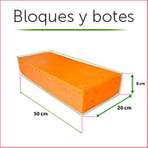
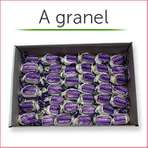
 Sweets and candies
Sweets and candies 









